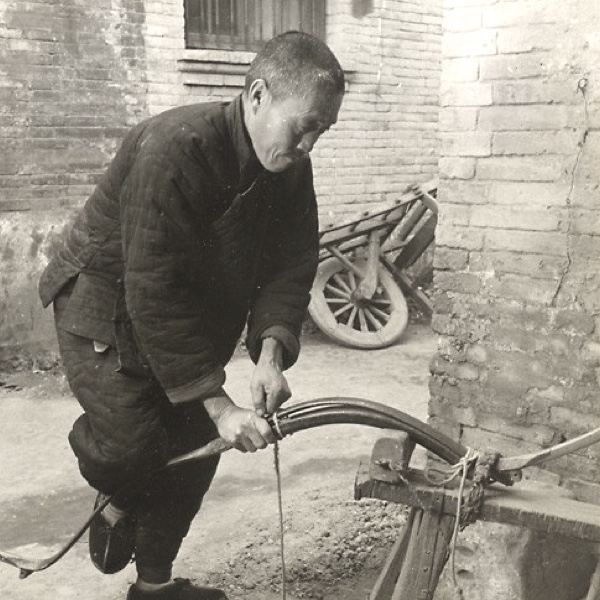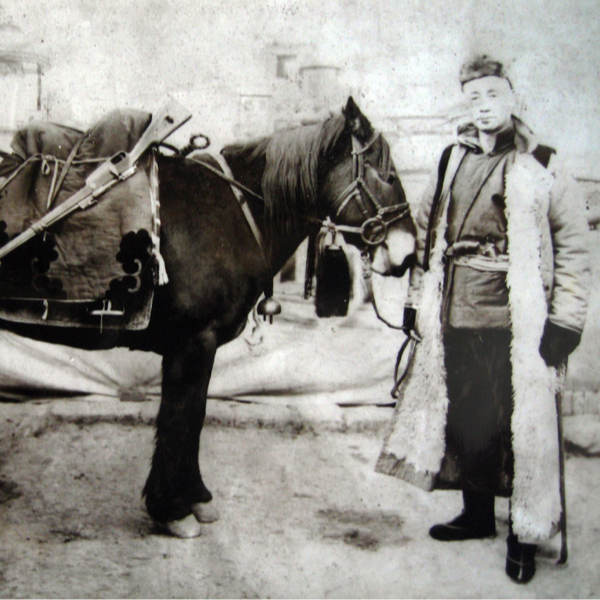
Biāojú (鏢局)
Language: Mandarin Chinese
Source: Pleco dictionary. Old photos.
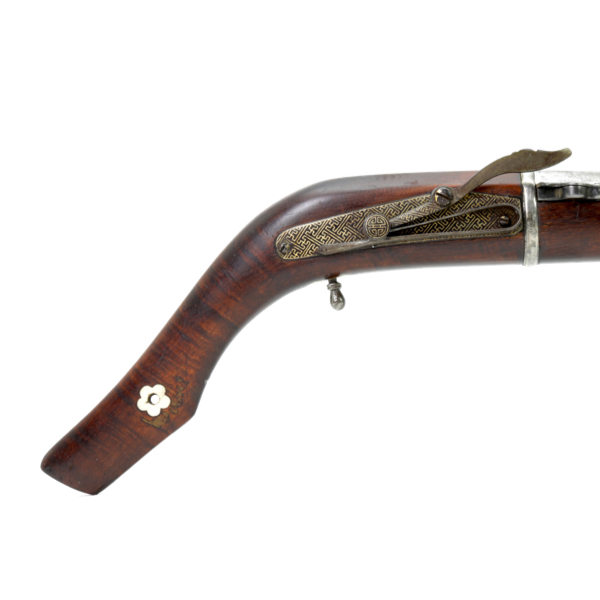
Fine mid Qing matchlock musket
With a golden damascened lock of the Indo-Portuguese type.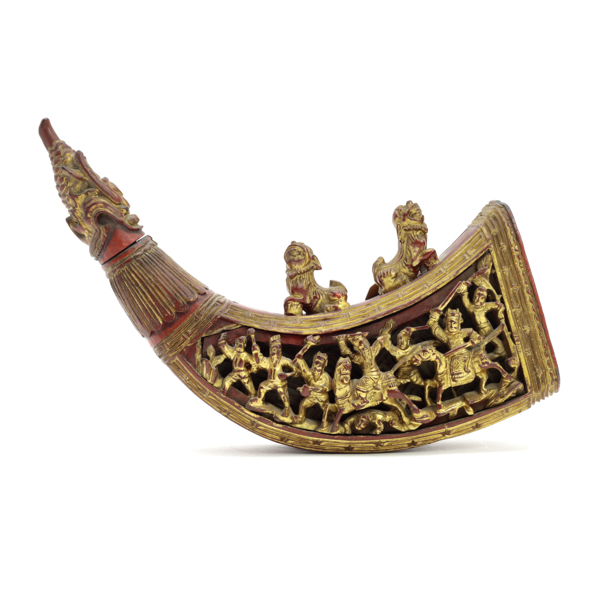
Fine Qing powder flask
Very good example with a finely carved warrior scene.
Qing imperial jade hilted dagger
An extremely rare dagger, made in the Qing court workshops.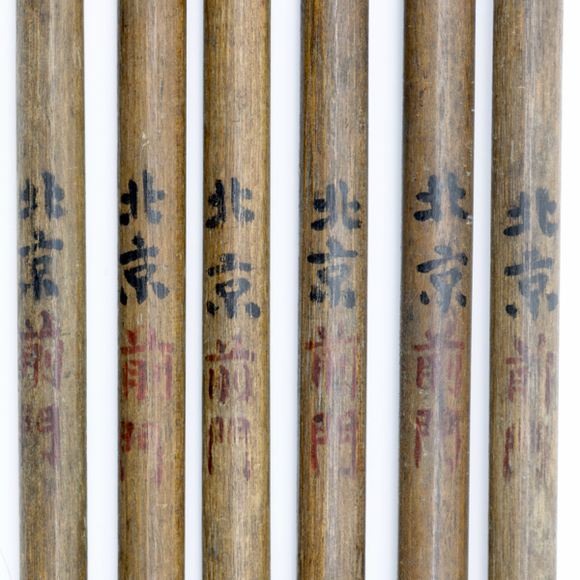
Qianmen war arrows
I am a bit of an arrow fetishist.
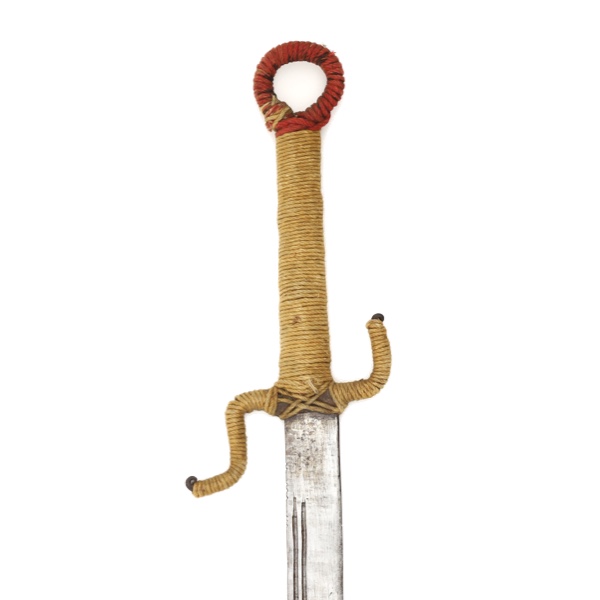
A large Qing dàdāo
Large and heavy example with the notable Umlauff provenance.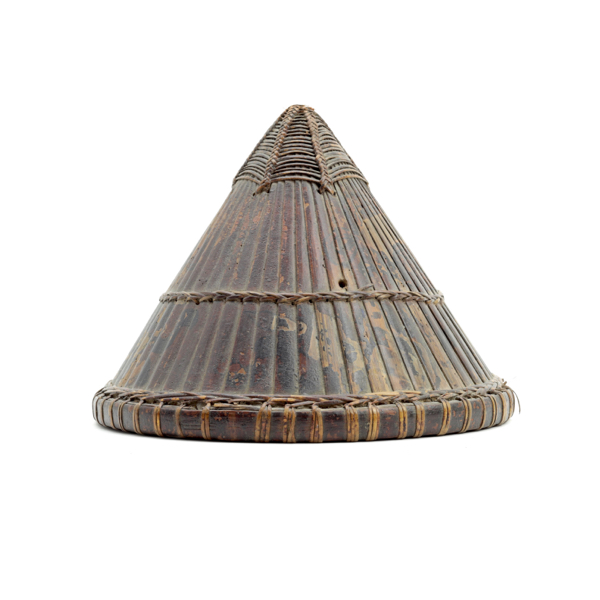
Painted conical bamboo helmet
Description
An old Chinese conical helmet of a type that militiamen and foot soldiers wore.
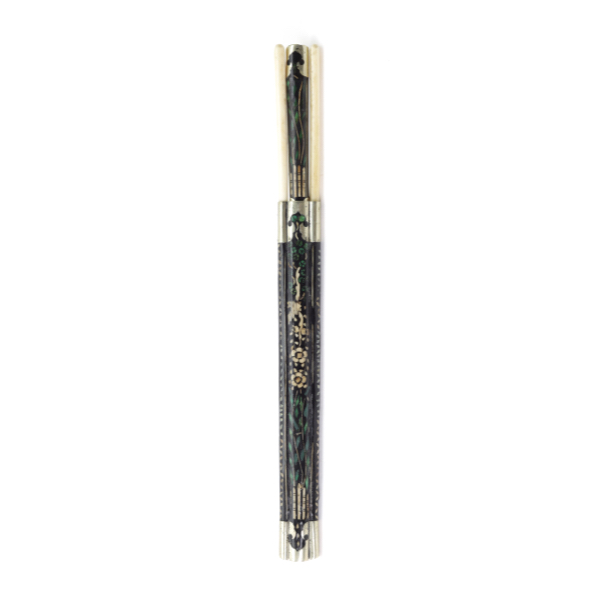
Inlaid lacquer trousse set
Unusual Chinese trousse set with "friends of winter" theme.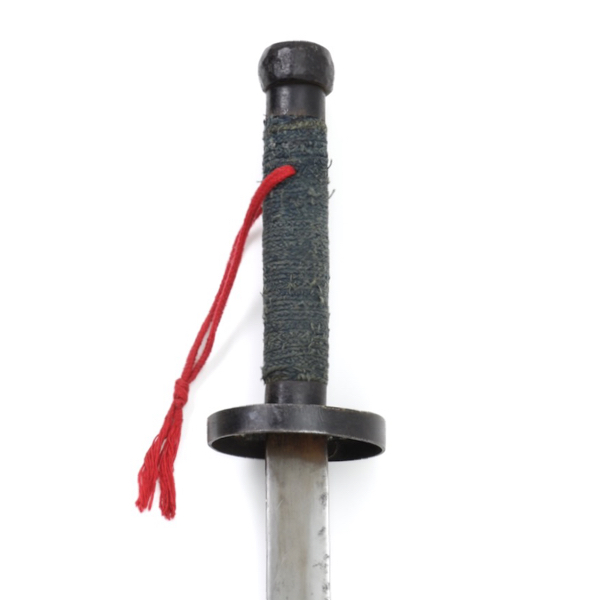
Large Qing military sword
Probably of Southern origin, with a straight blade and flaring tip.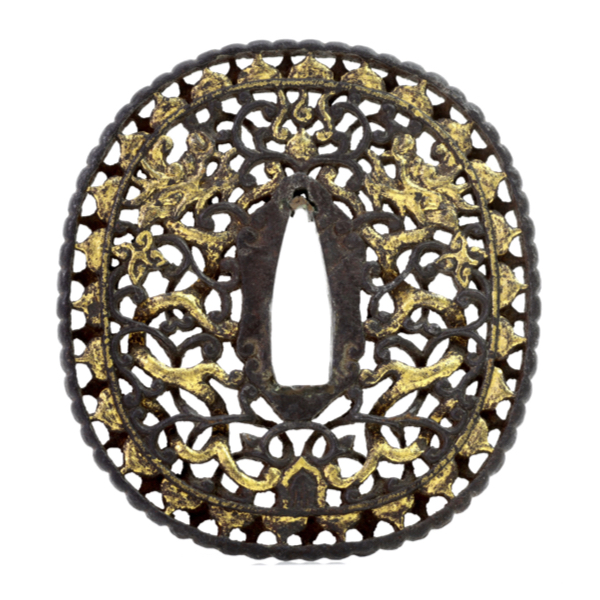
Southern Chinese openwork sword guard
In the style of northern work of the 16th and 17th centuries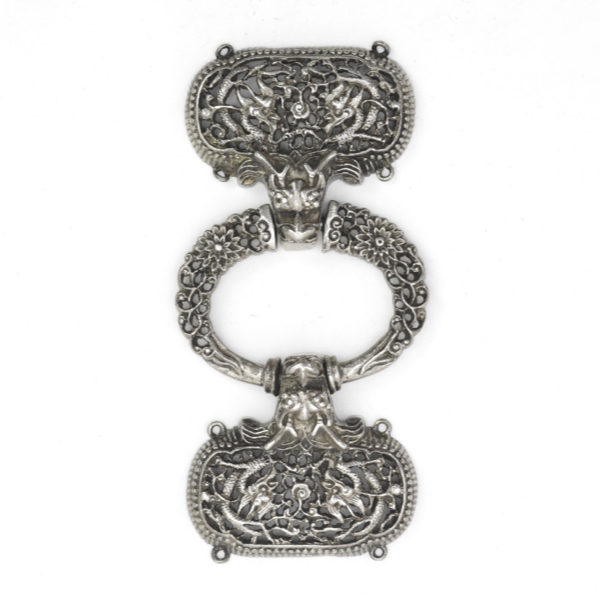
Pierced silver buckle
Made of solid silver, in Qing court style. With 19th-century European import marks.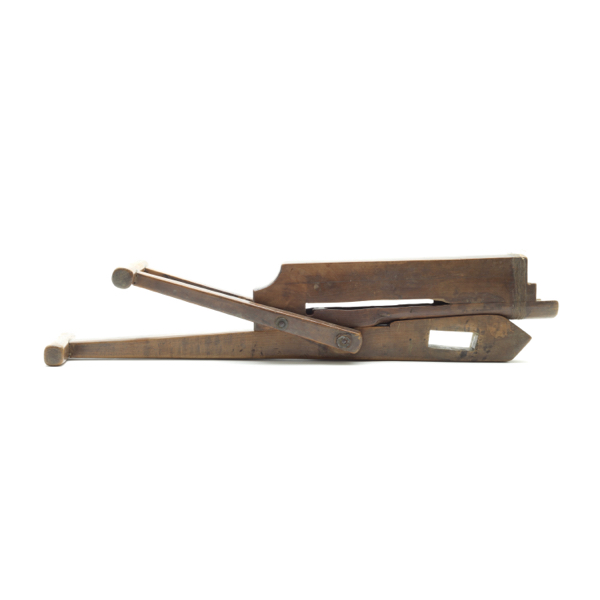
Repeating pellet crossbow stock
A very rare variety of the Chinese repeating crossbow that shoots large pellets.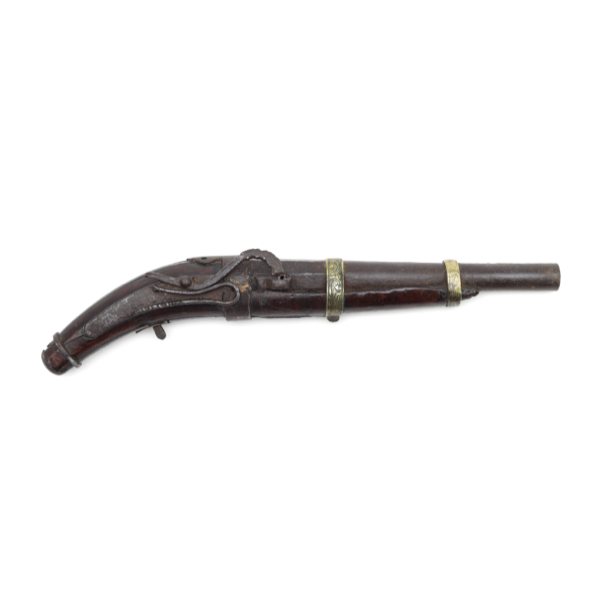
Chinese matchlock pistol
The first of its kind I've ever seen on the market.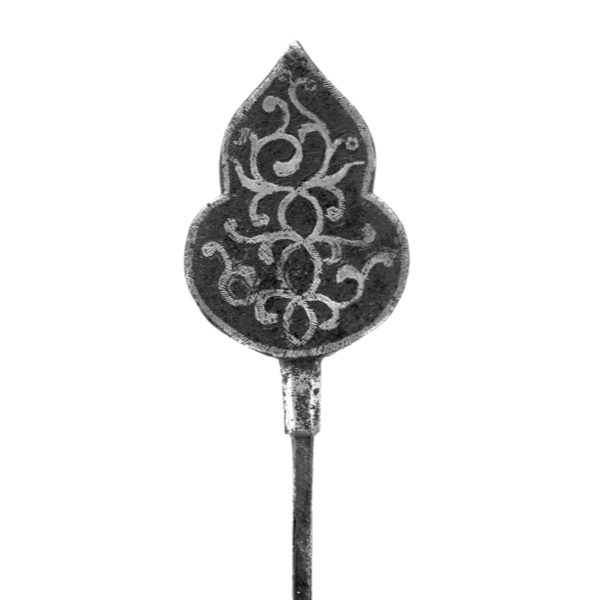
Ceremonial arrowhead
Made of iron, shaped as a gourd, with silver overlay.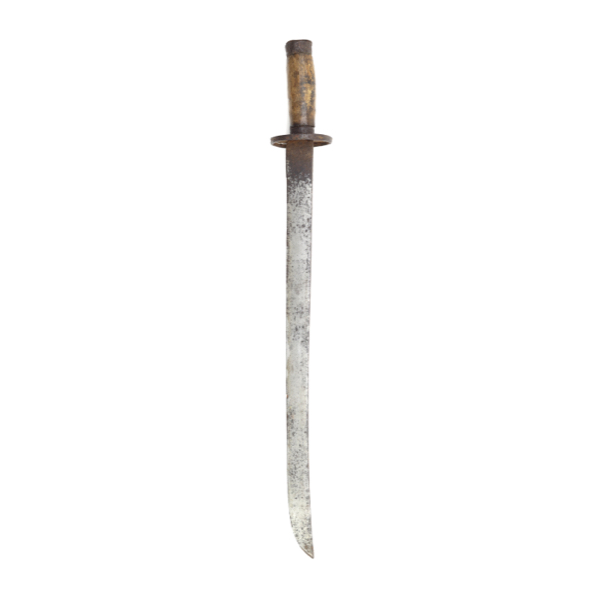
Chinese village dāo
A simple utilitarian weapon, probably made for rural martial artists or militia.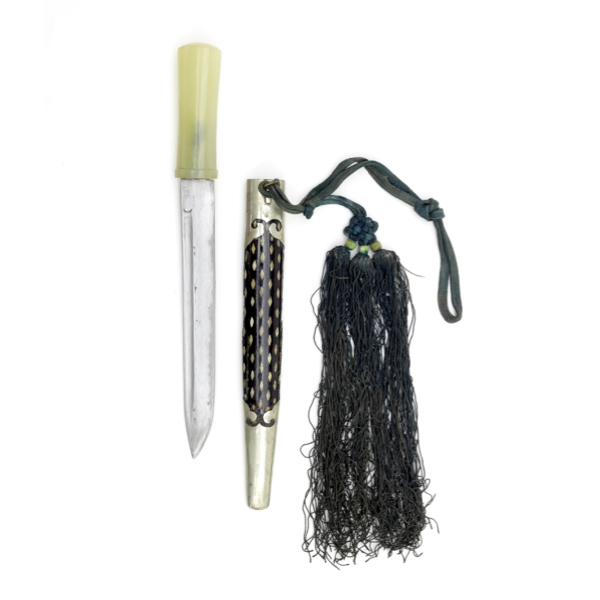
Chinese jade hilted knife
With fine quality jade hilt and baitong mounted scabbard.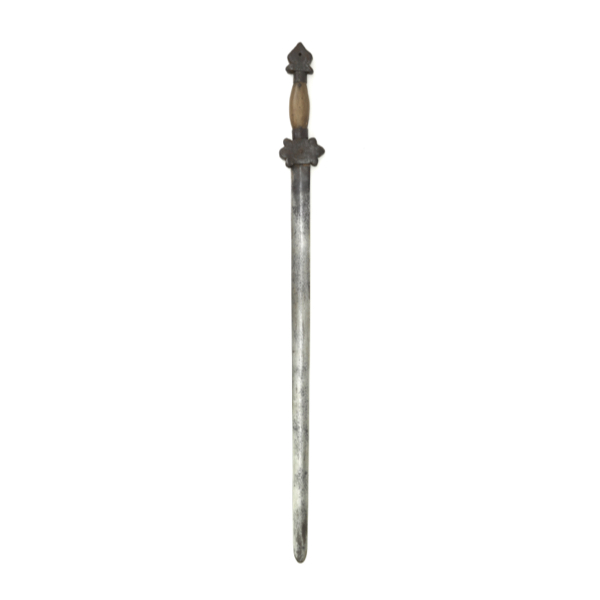
Late Qing tuánliàn jiàn
Long yet light, with unusual flower-shaped iron guard.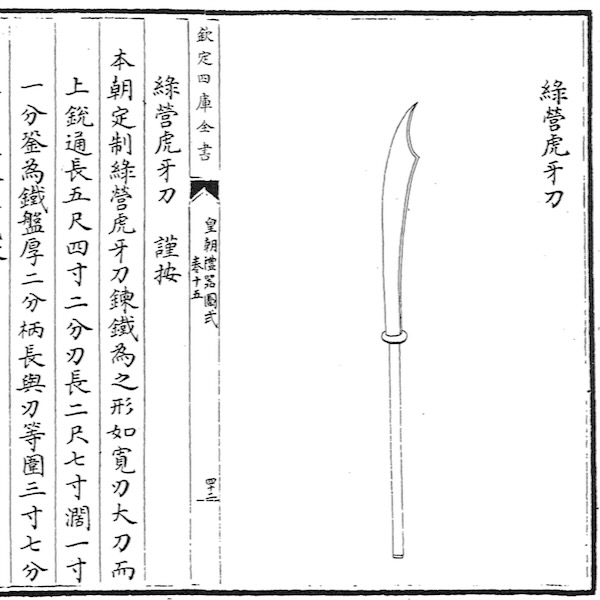
Hǔyádāo (虎牙刀), "tiger tooth sword"
Mandarin name of a Chinese-edged weapon with a 1:1 hilt-blade ratio.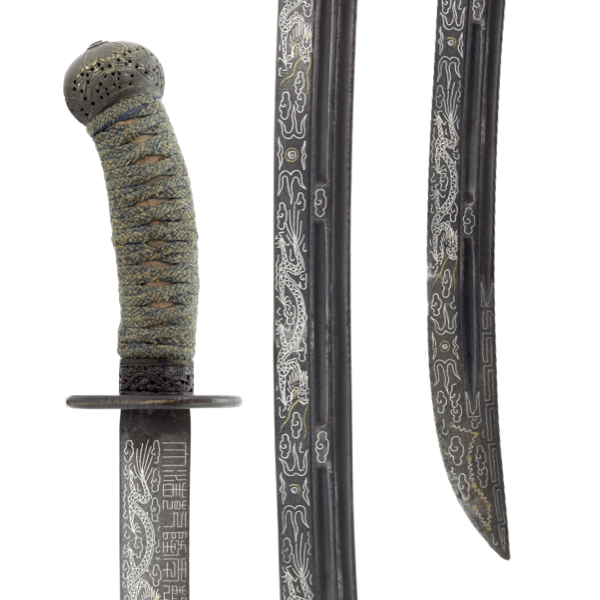
Silver overlaid pèidāo
A Qing officer saber with silver overlay on the blade.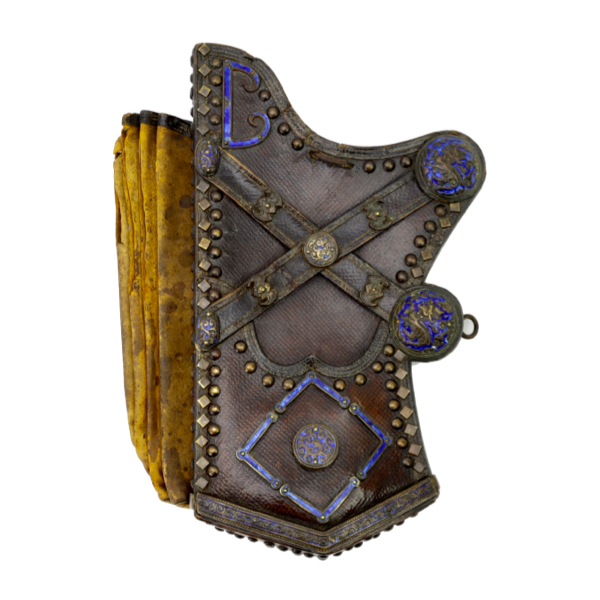
Rare imperial xièzhì decorated quiver
Xièzhì are mythical animals and were the emblem of the Qing censorate.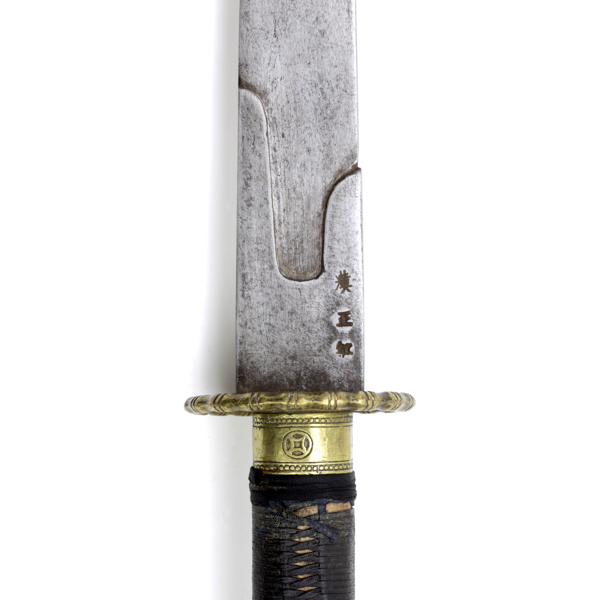
Han Plain Red Banner saber
Southern Chinese saber made for a soldier under the Plain Red Banner.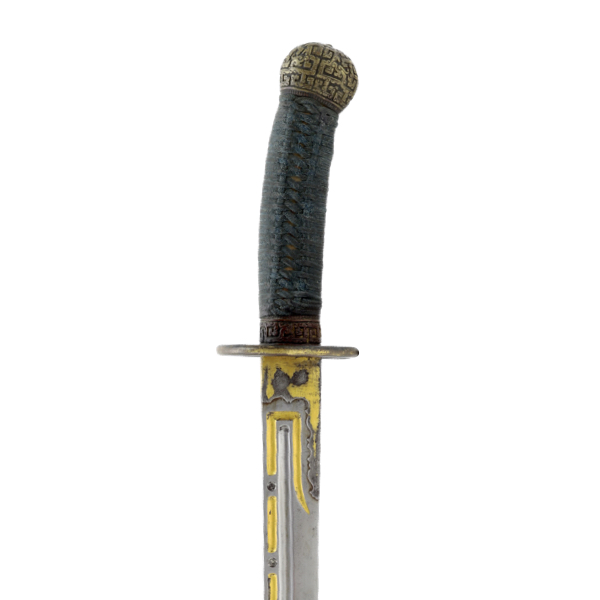
Qing peidao with gold grooves
With fine 18th century blade that combines many stylistic features.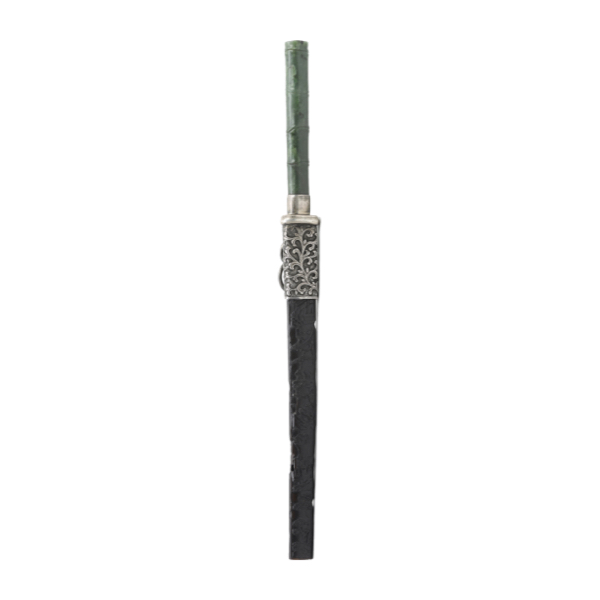
Jade bamboo hilted knife
With spinach green jade handle and carved buffalo horn scabbard.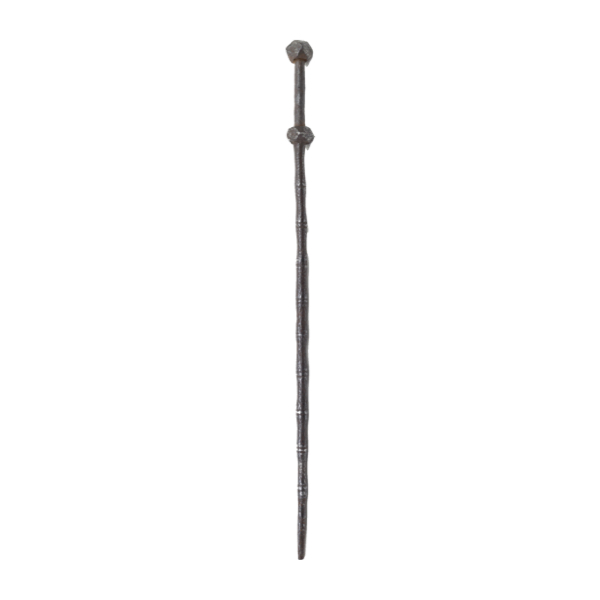
Chinese tiěbiān mace
A Chinese "sword breaker" with the rarer, bamboo-sectioned rod.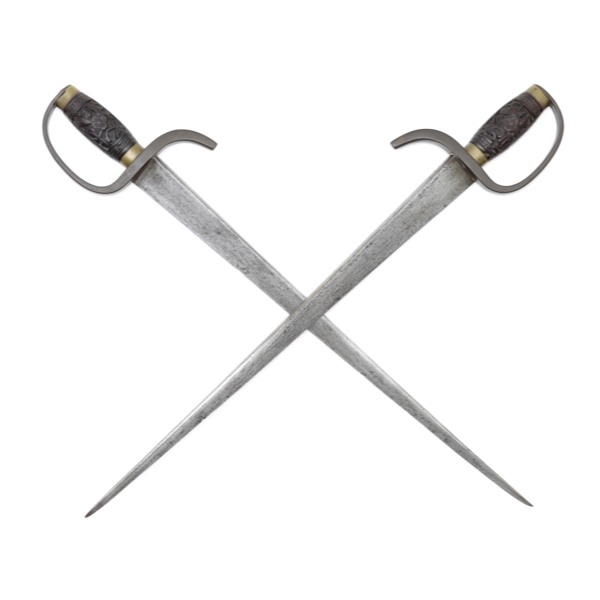
Slender hudiedao pair
A classic example of the narrow military type, with brass guards.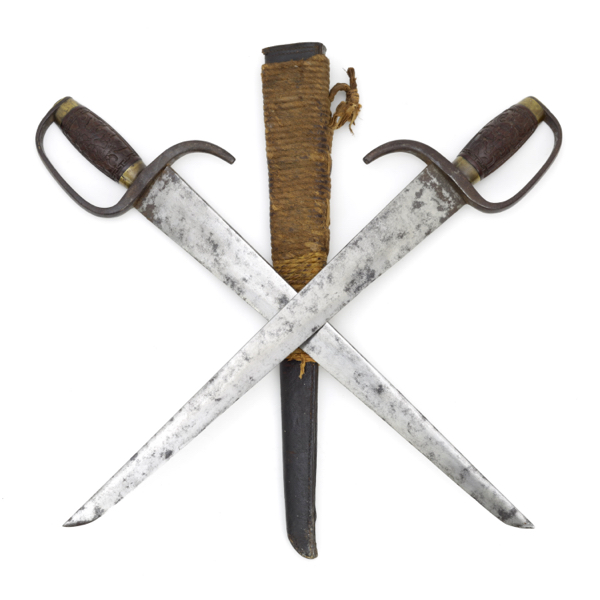
Hudiedao set with scabbard
Classic pair of Southern Chinese butterfly swords.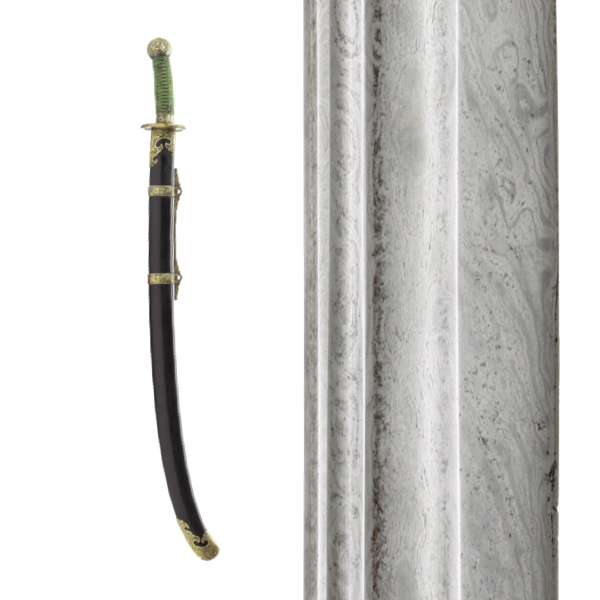
Qing twistcore peidao
A fine twistcore blade in standard pattern Qing military mounts.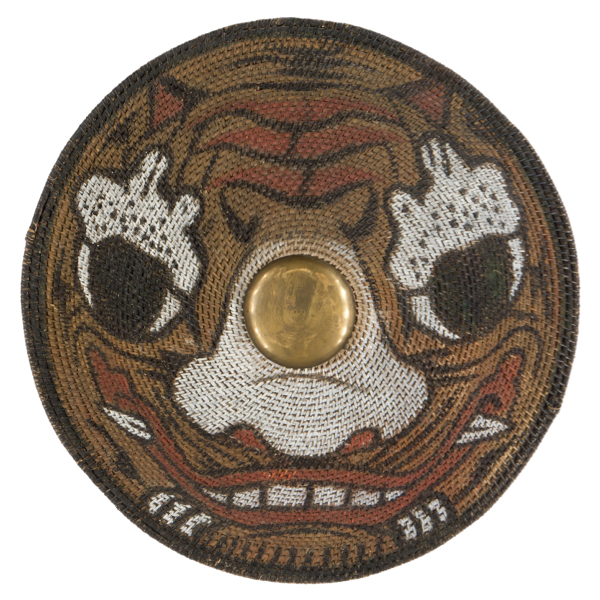
Chinese tiger shield
A large Chinese rattan shield called tengpai, used by special front-line troops.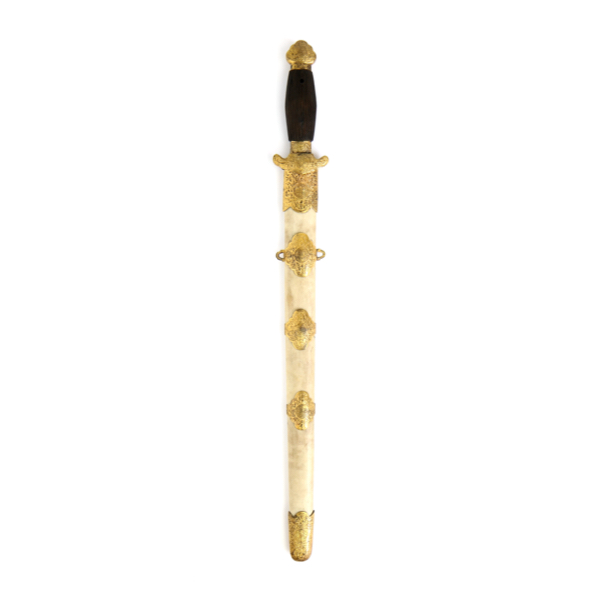
Gilt duanjian with foreign blade
Unusual Chinese duanjian with fine gilt mounts and a blade of non-Chinese origin.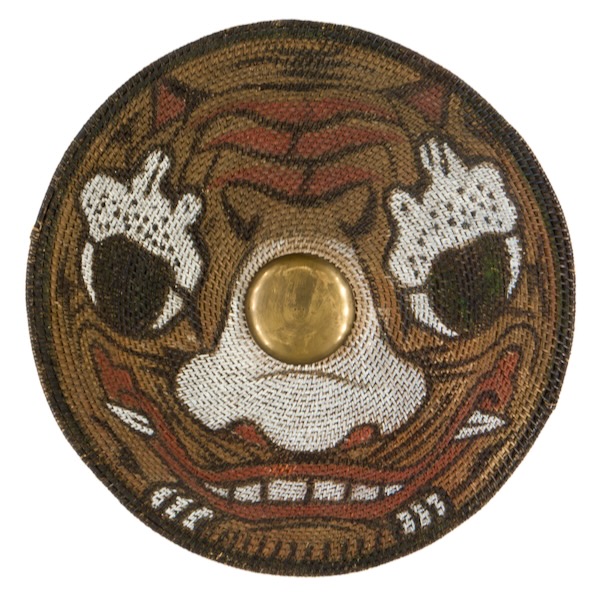
Qing military rattan shield production
Translation of a page from Qing regulations that describes the production of the Qing military rattan shield.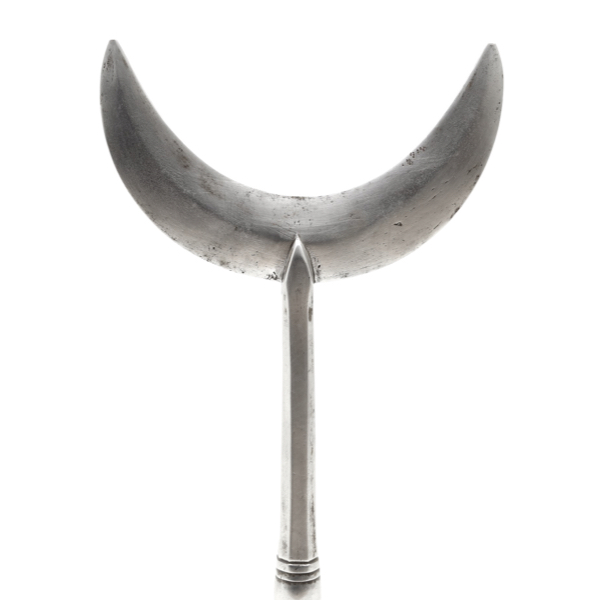
Chinese crescent spearhead
A robust and heavy example, crafted with care.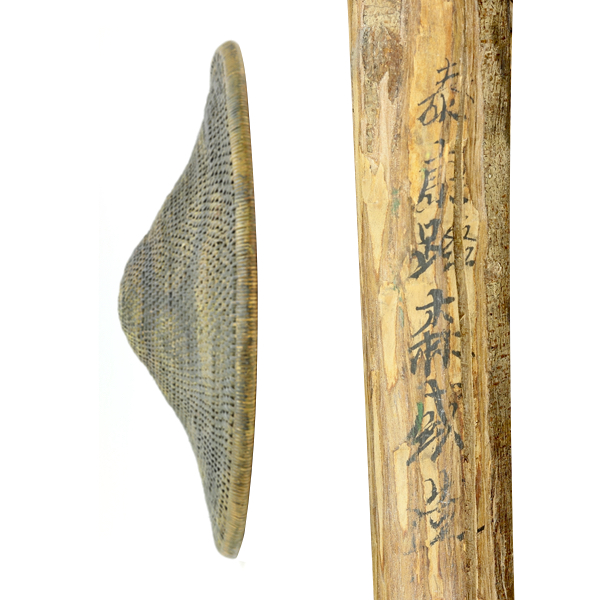
Signed Chinese rattan shield
This one has the early, peaked form and is signed by its maker.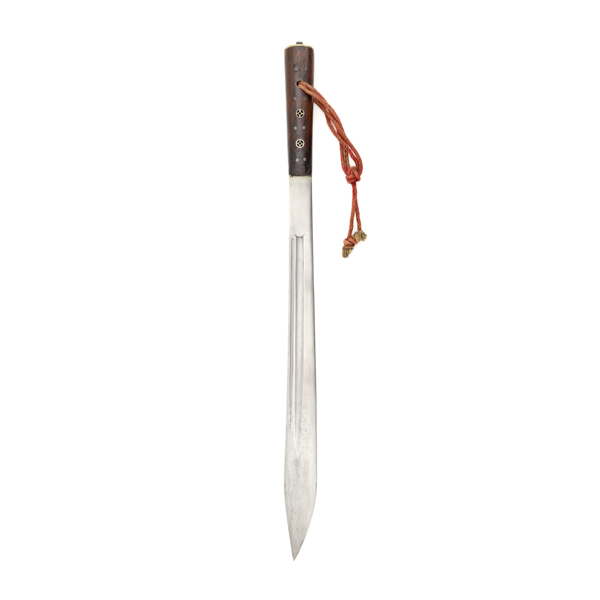
Large Chinese hunting knife
With fine blade in recent polish. With resting scabbard.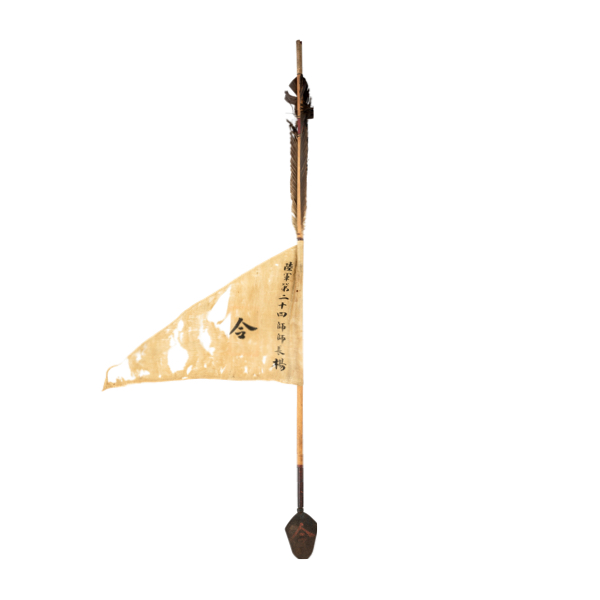
Lìngjiàn (令箭) or "Command Arrow"
A special arrow used to prove one's authority.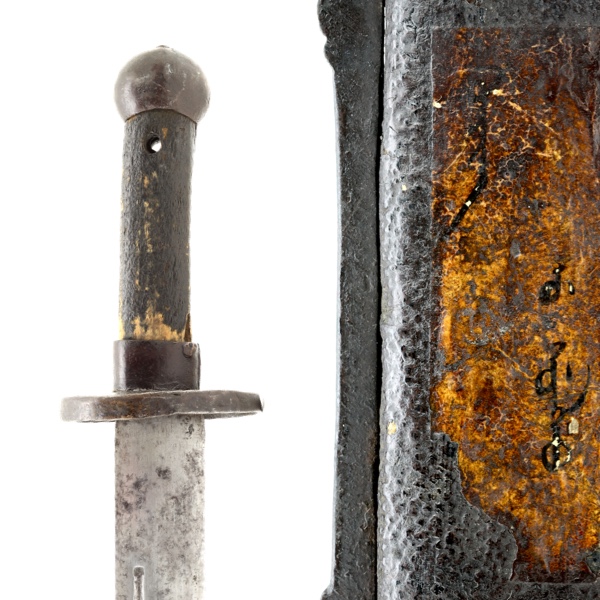
The saber of Manchu Wu Songlu
A standard pattern Qing military saber, but with the rare addition of a label in Manchu.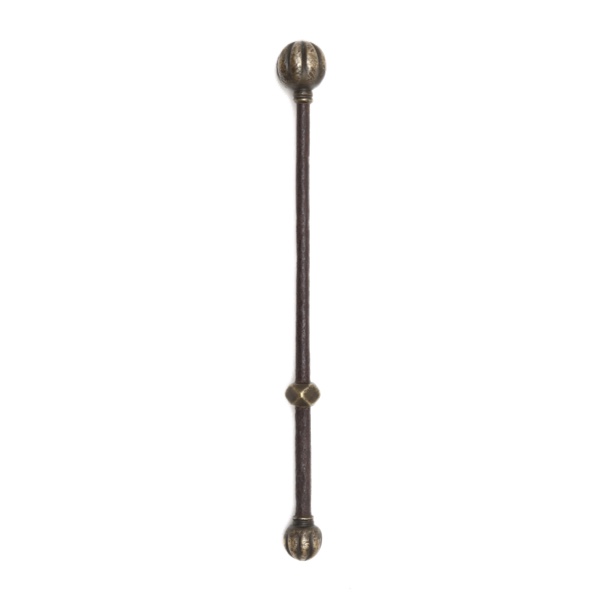
Chinese garlic mace
Called suàntóu gǔduǒ in Mandarin, with characteristic brass head.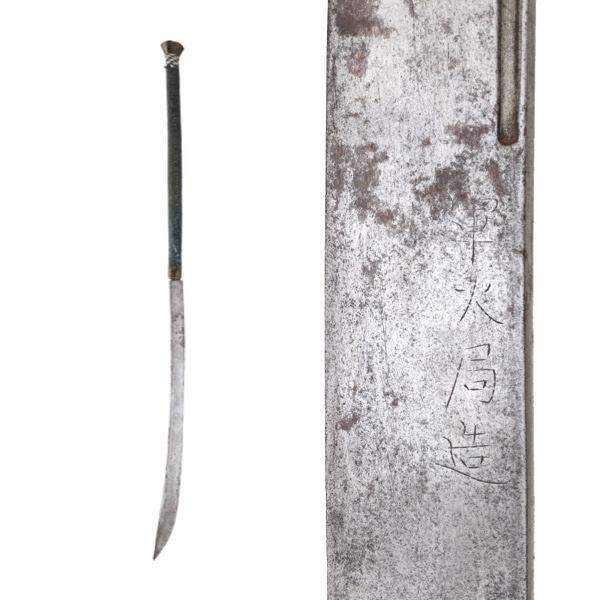
Jūn Huǒ Jú-made shuāng shǒudāo
Produced in the ordnance factory in Zengbu, near Guangzhou.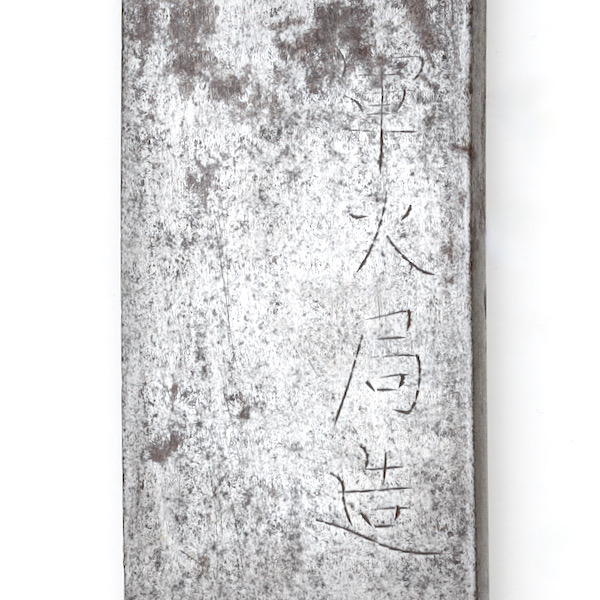
Jūn Huǒ Jú (軍火局)
Name of a Chinese arms factory just east of Guangzhou, active 1875 onwards.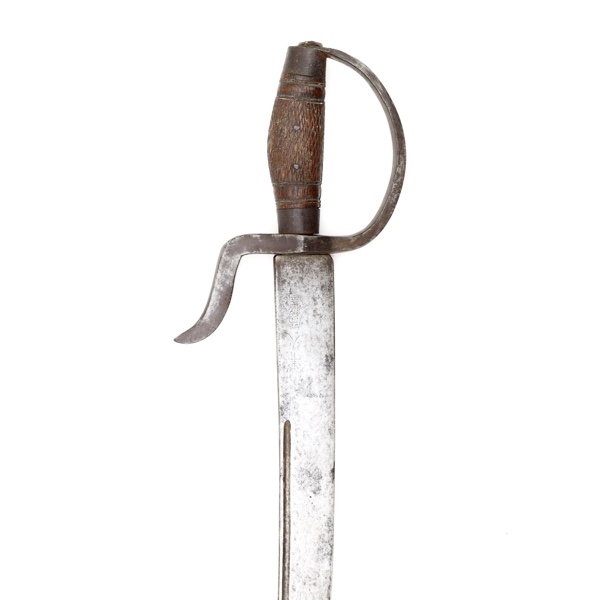
Jūn Huǒ Jú-made saber
Produced in the ordnance factory in Zengbu, near Guangzhou.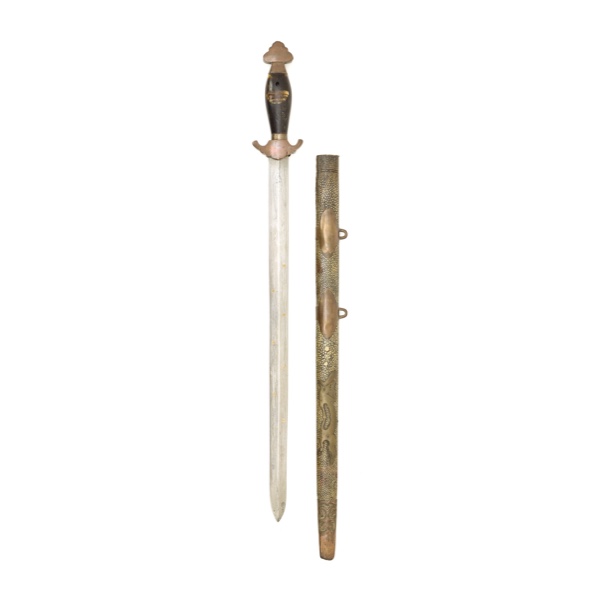
Chinese medium size jian
A heavy piece with a substantial blade, with smooth bronze mounts.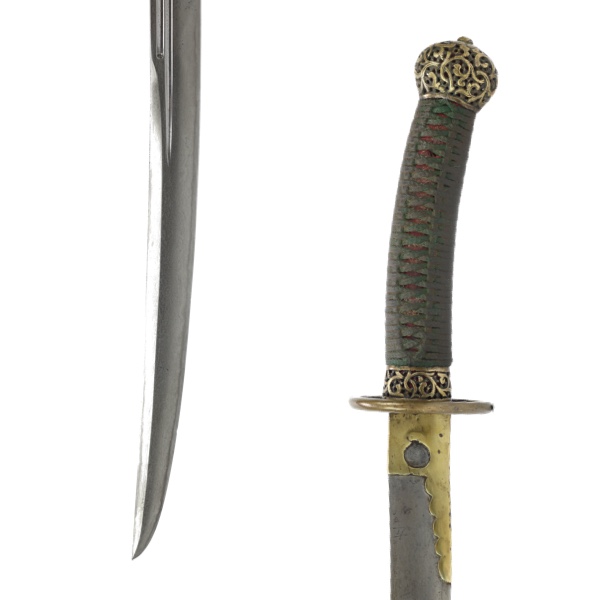
Liuyedao with very good blade
Description
This Chinese liǔyèdāo is an excellent example of Chinese bladesmithing at its best.
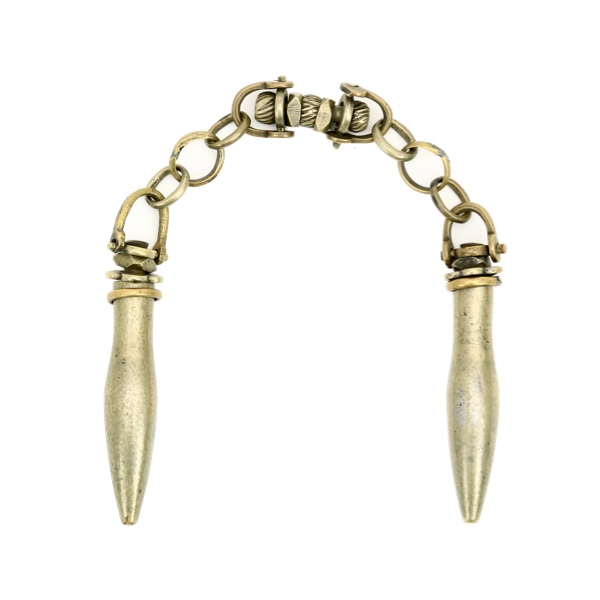
Chinese báitóng whip
A Chinese traditional hidden striking weapon, this time executed in the "white copper" alloy.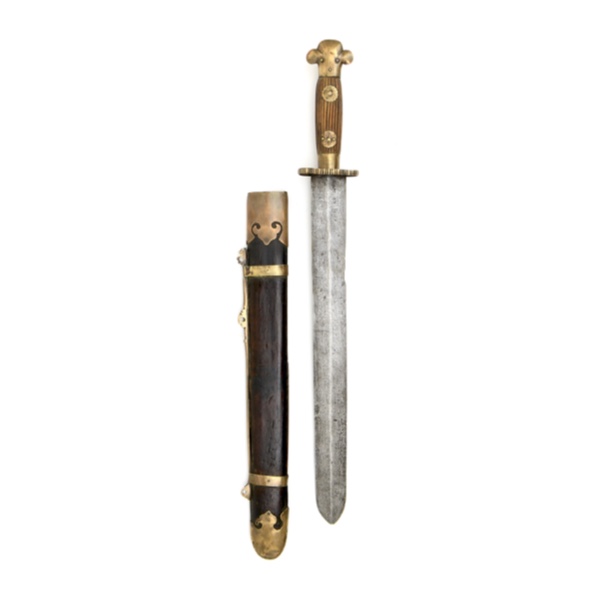
A Chinese headman's sword
Of rare form with short but very heavy double-edged blade.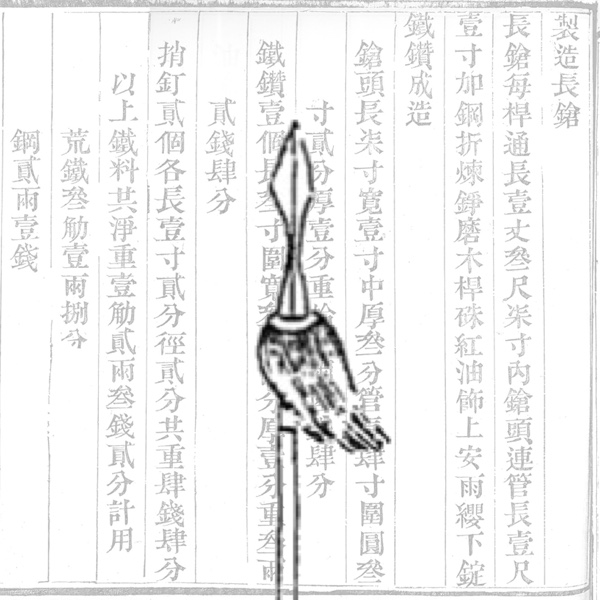
Construction of the Qing dynasty long spear
From an 1812 text regarding the manufacture of Qing military equipment.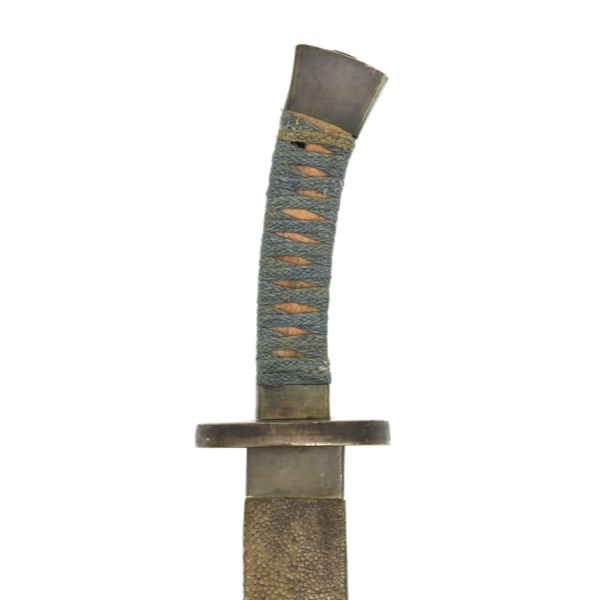
Qing fangshi soldier's saber
A rare surviving example of the simple military version of this style.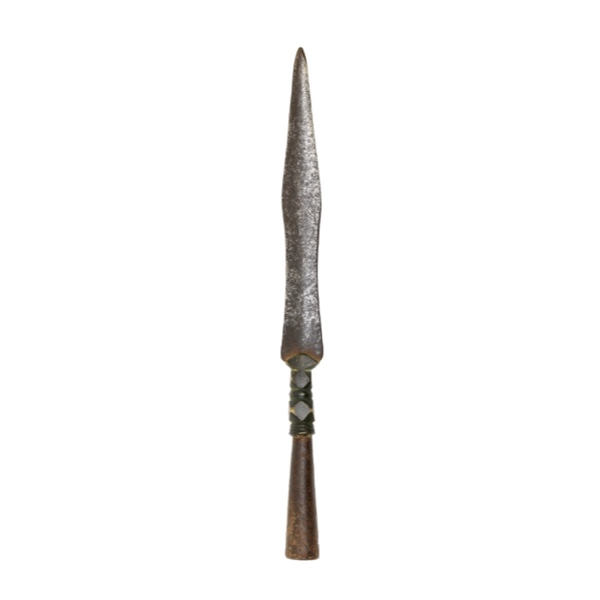
Antique Chinese spearhead 3
Of classic shape, with a leaf-shaped blade on a socket, connected by a cast bronze base.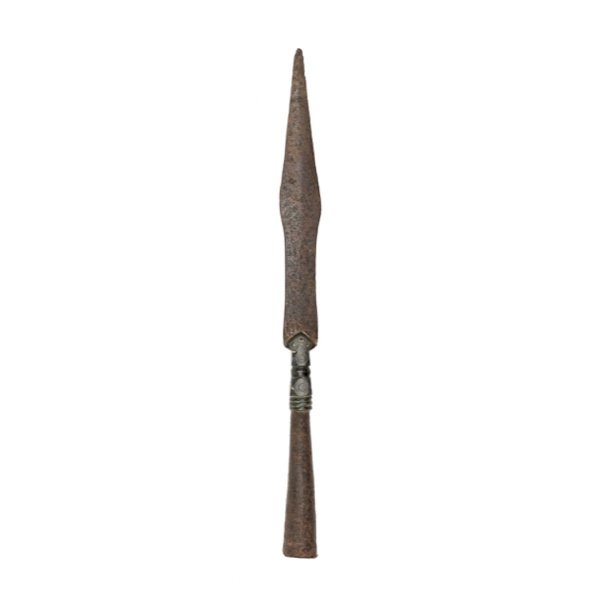
Antique Chinese spearhead 2
Of classic shape, with a leaf-shaped blade on a socket, connected by a cast bronze base.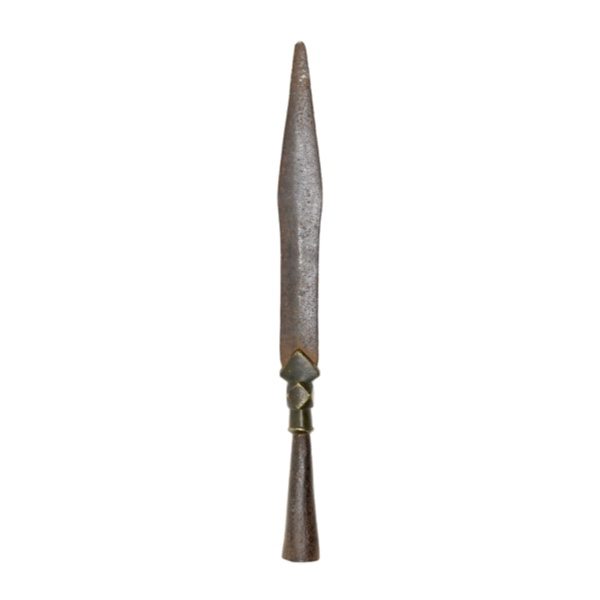
Antique Chinese spearhead
Of classic shape, with a leaf-shaped blade on a socket, connected by a cast bronze base.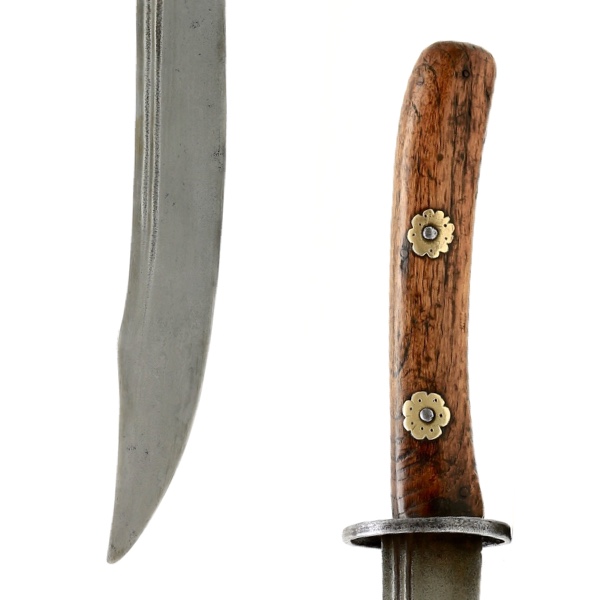
An unusual minority dao
The wide blade with clipped tip mounted on a riveted wooden grip.